Fri 22 May 2020
Music I’m Listening To: ASLEEP AT THE WHEEL “Route 66.”
Posted by Steve under Music I'm Listening To[2] Comments
This song ought to get your feet a-tapping:
Fri 22 May 2020
This song ought to get your feet a-tapping:
Thu 21 May 2020
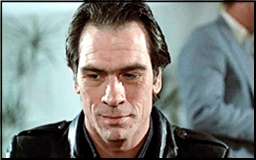
BLACK MOON RISING. New World Pictures, 1986. Tommy Lee Jones, Linda Hamilton, Robert Vaughn, Richard Jaeckel. Based on a story by John Carpenter, also one of the co-screenwriters. Director: Harley Cokliss.
The “Black Moon†in this movie is a car, and not just any car. It’s an experimental car, one that’s designed to travel at speeds of over 300 miles per hour. Valuable? Yes, no doubt about it. And when it’s stolen, by an organized gang of thieves not knowing exactly what they have, do the owners want it back>? I’m repeating myself. No doubt about it.
This is not a “car movie,†though, as many many movies in the 80s were. It’s really about Quint, Tommy Lee Jones’ character, a thief himself. He’s stolen a cassette of important evidence that the owners want back, and he’s hidden it for safekeeping in the car that’s been stolen. Now he needs to find the car too.
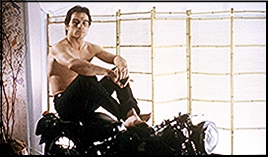
And just by the way, I said the gang of thieves did not realize what they had stolen. This is not exactly true. Their leader on the street and a whiz with cars, especially at stealing them, is Linda Hamilton, and even though it thoroughly displeases her boss (Robert Vaughn) upstairs in a tall tower of a building, she wouldn’t mind the idea of being able to drive off with it.
It was toward the beginning of Jones’ movie-making career when this one was made, still in the stages of making movies for TV and other ones almost no one ever saw, but does he have screen presence?
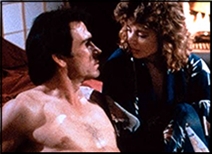
The answer, as succinctly as I can made it, is Yes. He fits my mental picture of a tough-as-nails thief-for-hire perfectly. And tough as nails is exactly what he has to be. He takes one of the more brutal beatings in this movie that I can imagine – and is still able to get up the next day to finish the operation that he has in the works to reprieve the car. (What this is, you see, is a double heist movie.)
Most movie such as this I am always content to sit back and enjoy the flow. Linda Hamilton is always a plus, as easy as the eyes as she is, but this is Tommy Lee Jones’ movie all the way. Even after seeing Black Moon, the car, really do its stuff when it needs to.
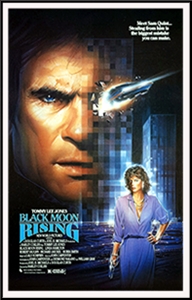
Thu 21 May 2020

ERLE STANLEY GARDNER – The Case of the Sleepwalker’s Niece. Morrow, hardcover, 1936. Pocket #277, paperback, 1944. Reprinted many times since. TV Adaptation: Perry Mason, 28 September 1957 (Season 1 Episode 2), with Raymond Burr as Perry Mason.
Perry Mason is approached by a “peculiar†client – Edna Hammer. who seeks help for her uncle, Peter Kent. Kent has a bad habit of sleepwalking. and when he does, he heads for (he carving knives and curls up in bed with one. Edna is afraid Uncle Peter will kill someone, and she wants Mason to prevent this.
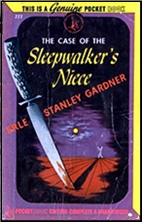
Kent has other troubles: a wife who instituted divorce proceedings on account of the sleepwalking but now wishes to reconcile; a fiancee whom he wishes to marry but can’t unless the divorce goes through: a complicated business arrangement with a “cracked-brained inventor”; a hypochondriac half brother; and a woman tailing him in a green Packard roadster. Mason spends a night at the Kent home, and by the next morning there is a bloodstained knife under Peter Kent’s pillow, a corpse in the guest room, and a client in very hot water.
The writing in this early novel is taut and lean — reflective of Gardner’s hard-boiled work for such pulp magazines as Black Mask. The dialogue is terse and packs a good impact. and there are none of the long-winded conversations and introspections that characterize the later Perry Masons. A first-rate example of Gardner’s work in the Thirties and early Forties.
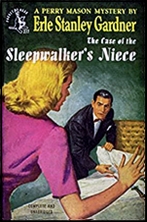
Some other notable titles in the series are The Case of the Black-Eyed Blond (l944), The Case of the Lazy Lover (1947), The Case of the Green-Eyed Sister (1953), and The Case of1he Daring Decoy (1957). After the late Fifties, the novels seem to lose something, possibly as a result of Gardner’s work on the Perry Mason TV series. Mason is less flamboyant. and the plots are not as intricate or well tied off as in the earlier novels.
Gardner created other series characters, writing under both his own name and the pseudonym A. A. Fair. The best of these under the Gardner name arc small-1own prosecutor Doug Selhy (The D.A. Calls It Murder, 1937; The D.A. Cooks a Goose, 1942). whose role as a hero is a reverse of Hamilton Burger’s; and Gramps Wiggins (The Case of the Turning Tide, 1941; The Case of he Smoking Chimney, 1943), an iconoclastic old prospector whose experiences reflect Gardner’s childhood travels with his mining-engineer father.
In addition to his novels, Gardner wrote hundreds of mystery and western stories under various names for such magazines as Argosy, Black Mask, Sunset, West, and Outdoor Stories.
———
Reprinted with permission from 1001 Midnights, edited by Bill Pronzini & Marcia Muller and published by The Battered Silicon Dispatch Box, 2007. Copyright © 1986, 2007 by the Pronzini-Muller Family Trust.
Wed 20 May 2020
THE ADVENTURES OF TOM DRAKE, GUARDIAN OF THE BIG TOP. “The Invisible Thief.†Mutual, Summer replacement show, June 1949. Air date: a Wednesday. Probably the second show of the series. Vince Harding as Tom Drake, and Fred Rains as his sidekick, Eddie Roth.
Kids’ shows on OTR such as this one don’t show up very often, so when one does, I’m always happy to hear about it. Tom Drake was a 1949 summer replacement on Mutual for Superman, airing M-W-F and alternating with Bobby Benson on T-Th. I remember listening to the latter, since it lasted longer, but 1949 was maybe a year or two early for me to have been listening.
The circus that Tom Drake works for is having problems with a thief in this one, an invisible one who sneaks into the performers’ tents and steals things with no one ever seeing him (or her). Since only small things are missing, Drake thinks the thefts are meant to be diversion for something bigger that is being planned.
He’s wrong, though, and I had it figured out within the first three or four minutes. You may, too, if you listen to it here, but if I (or you) were eight or nine, maybe we’d both be fooled a while longer. Interestingly enough, there were no commercials for the show, only promos to get the show’s young listeners to call their friends in to listen too. To me the show seems far too tame to get a lot of kids excited about it. It lasted only for the one summer.
For more information about the show, go here.
Wed 20 May 2020
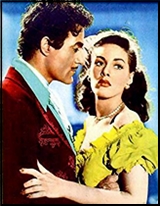
THE GAY CAVALIER. Monogram Pictures, 1946. Gilbert Roland, Martin Garragala. Nacho Galindo, Ramsay Ames, Helen Gerald, Tristam Coffin, John Merton. Screenplay by Charles Belden, based on the character created by O Henry. Foreword by Sidney Sutherland. Directed by William Nigh.
Gilbert Roland rides onto the screen as the Cisco Kid in this B Western and does so with a good deal more romance and less action than you might expect.
Cisco had been around ever since the story by O Henry whose original character is a far cry from the charming Mexican Robin Hood we know and love.
The original Cisco was a sociopathic Anglo Billy the Kid type hunted by a brave Texas Ranger captain (based on Lee Nace the Ranger who arrested and befriended William Sidney Porter in Texas for embezzlement). In the story the Kid uses his Mexican girlfriend to escape the Ranger having her ride away on his horse in his clothes and to be killed by the Ranger while he escapes on her horse in drag.
By the time Cisco came to the big screen, he was a charming but still ruthless Mexican bandit played by Warner Baxter, who managed to take home the first Academy Award playing the part in 1929 (Ronald Colman was nominated as Bulldog Drummond that year) in In Old Arizona.
Over the years Cisco was a handsome Cesar Romero (mostly playing himself), the beloved Duncan Renaldo of television fame, Jimmy Smits in a made-for-television movie, and the dashing and dangerous Gilbert Roland.
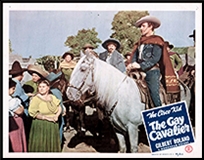
Roland my be billed as the gay cavalier, but there is nothing light or happy about him. There are a few rueful or slightly sinister smiles, and he romances some beautiful women, but his Cisco all in black is almost noirish dark, driven, and haunted as well as philosophical.
Roland, debuted in the silent era and went from leading man to character actor over his career, but as Leonard Maltin once wrote, no movie was ever worse for his presence, and here as a dark and sardonic Cisco he brings something new to the character.
The film opens with Cisco on a hill top standing with his hat off beside a cross. It is the grave of his father. As his fat friend Baby (Nacho Galindo) explains to one of the gang, Cisco’s father was the most powerful man in California at one time, and now Cisco to atone for his father’s sins and so the old man can rest, has become a Robin Hood stealing from the rich and giving to the poor.
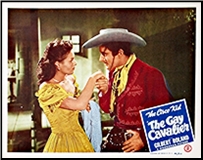
I don’t think any other film ever gave Cisco an origin story.
Meanwhile Don Felipe (Martin Garragala), a poor ranchero, is marrying his daughter (Helen Gerrald) off to wealthy gringo John Lawton (Tristam Coffin) though she loves a poor Mexican boy. What no one knows is that Lawton and his man (John Merton — a bad guy surprise surprise) are criminals planning to use Don Felipe’s estate as a base and have already held up the money gathered to build a new church and blamed the Cisco Kid for the crime.
That doesn’t sit well with this Cisco. He determines to find whoever imitated him and stole the church money, and once he knows it is Lawton to play Cupid for the young Juan and Don Felipe’s daughter.

Meanwhile Cisco finds time to romance the older and much more attractive daughter, Ramsay Ames.
There is a raid on Lawton’s hideout to steal the money back for the church, and a well staged duel with swords between Coffin and Roland, but little boys must have been squirming in their seats on Saturday mornings as this one unreeled. On the other hand, adults may have enjoyed a more mature Western done with some actual charm and a charismatic lead who could actually act.
Leonard Maltin’s axiom stands. Like anything else he was in, no movie was ever worse for the presence of Gilbert Roland, and many, like this one, far better for him being in it.
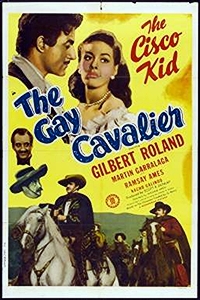
Tue 19 May 2020
RICHARD DEMING “The Juarez Knife.†Novella. Manville Moon #1. First published in Popular Detective, January 1948. Available as an individual story in a Kindle edition (Wildside Press, 2018).
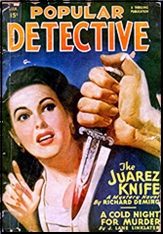
Not only is this Manny Moon’s first appearance in print, it’s also Richard Deming’s first published work of crime or mystery fiction. Not only did he go on to write hundreds of short stories for the pulp and digest magazines, but he was also the author of dozens of hardcover novels, including three featuring the same Manny Moon, known best perhaps as the private eye with only one leg.
And in “The Juarez Knife†we learn that he lost the portion of it below the knee in the war, and that to replace it, he’s been fitted with a “cork, aluminum, and leather contraption†that when he tries to get up suddenly at night without it, he finds himself “lying half under the bed on a bruised right elbow.â€
The call is from a semi-crooked lawyer who has a job for him. “Semi-crooked†is my term for him, since he has been indicted once, but nothing more. When he gets to the gent’s office, a young girl goes in before him. When he is called in, the girl has gone out a side door, but his would-be employer is lying across his desk dead, with a knife in his chest.
As it so happens, the door the girl went though was under watch, and she is the only one who came out. The windows are open, but the ledge outside is too narrow for anyone to have used it, and it’s fourteen stories up. Moon takes her on as a client anyway. He believes she is innocent simply on the fact that after leaving the office she calmly went on to a previously scheduled hairdresser appointment.
You do not expect stories tin pulp magazines to be traditional locked room mysteries, but this is a good one, and it’s fairly clued as well. The only problem is that the real killer could only be one person, and sure enough, he/she is. Beside the three Manny Moon novels, there were eighteen novelettes and short stories in which he appeared. They’ve never been collected, as far as I know, but a number of them are now available in Kindle format, reasonably priced at only 99 cents each.
Mon 18 May 2020

BLACK WIDOW. 20th Century Fox, 1954. Ginger Rogers, Van Heflin, Gene Tierney, George Raft, Peggy Ann Garner, Reginald Gardiner, Virginia Leith, Otto Kruger, Skip Homeier. Produced, written and directed by Nunnally Johnson. Based on the novel by Patrick Quentin.
Somewhere in this Technicolor wide-screen Cinescope production, there is a rather ordinary back-and-white but still effective noir film just aching to break out. When the wife (Gene Tierney) of successful New York City playwright Peter Denver (Van Heflin) goes out of town for an undetermined amount to time to be with her sick mother, he makes an all but fatal mistake. He allows a young would-be writer (Peggy Ann Garner) in ingratiate herself into his life.
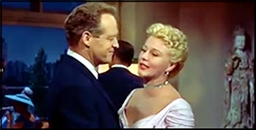
She’s twenty years old and sweet-talkingly fresh from Savannah, Georgia, and while we the audience know how up to no good she is, Peter Denver is oblivious to the obvious. It does not help that the leading lady (Ginger Rogers) in his current play on Broadway lives with her husband the the apartment just above the Denvers. She is the epitome of catty and a woman who does not care who knows it. Discreet is not a word in her vocabulary.
And when upon Iris’s return young Nancy is found dead in the Denvers’ bathroom, Peter finds the hangman’s noose tightening around his own throat. Figuratively speaking, but still a distinct possibility, unless he does something about it personally, even while the police, in the person of homicide captain George Raft, are hot on his trail.
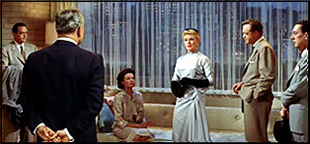
At which point the nor aspects are set aside and the story becomes that of a much more ordinary detective mystery. A very very solid one, I hasten to add, but a story not quite as interesting as the jam Peter Denver gets himself into, quite unwittingly. I’m sure that fans of film noir will find the first half as satisfying enjoyable as I did. All the performances are very good, but Van Heflin and Peggy Ann Garner outshine them all.
I do not know why Peter and Iris Duluth’s name was change to Denver for the sake of the movie, but I suspect (without evidence) that other less obvious changes from the book were made also. Those who have read the book can perhaps tell us more.
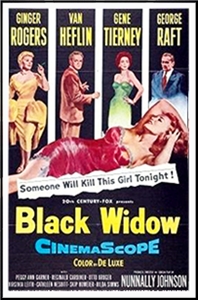
Mon 18 May 2020
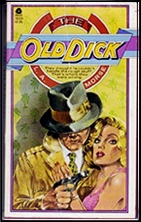
L. A. MORSE The Old Dick. Jake Spanner #1. Avon, paperback original 1981. Made for TV movie: Jake Spanner, Private Eye (USA Network, 1989, with Robert Mitchum as Jake Spanner).
There have been a number of detectives in the world of mystery fiction whom you’ve have to call “elderly,†but at age seventy-eight . I think Jake Spanner has most of them beat. Miss Marple, I believe, was up in her eighties when she was still active, and some of you with better memories than mine can probably come up with more right away.
But how many of these would you all hard-boiled private eyes? In his own words, Jake Spanner has always tried never to give satisfaction to assholes, if he could help it, and now that he’s retired, he see no reason to change.
He hasn’t had an erection in five years, either, or so he says at the beginning of chapter one. How old he is soon begins to sound like an obsession with him, but with old duffers like this, sometimes you just put up with things like that a little bit more.
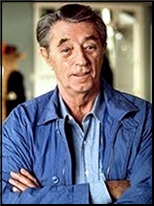
Spanner comes out of retirement in this book, as you would have guessed, but throughout it all, he remains pretty much surprised by it. At any rate, he decides to give a helping hand to a one-time enemy from the old days, a gangster known as Sal the Salami (for reasons we won’t go into here). It seems that his grandson has been kidnapped, complication begin to develop and thrive, deliciously so.
I don’t know who the author is. If someone were to tell me it’s not his first book, that he’s written loads of others, I wouldn’t be surprised at all. L. A. Morse, whoever he is, has an inventive touch that adds tremendously to a rather familiar story, plus a consistent style and a slightly vulgar sense of humor to match.
There are some books in which you’re lucky to get one of the above.
Rating: A minus.
Sun 17 May 2020

DEADLY DUO. United Artists, 1962. Craig Hill Craig Hill, Marcia Henderson, Robert Lowery, Dayton Lummis, Carlos Romero, Irene Tedrow, David Renard. Based on the novel The Deadly Duo by Richard Jessup. Director: Reginald Le Borg.
Based on the other work I’ve read by Richard Jessup, a fairly prolific writer of westerns and paperback crime fiction in the 50s and 60s, this might have been a good novel, an original from Dell in 1959, but even if the movie followed the book closely, which it very well may have, the translation still didn’t turn out all that well.
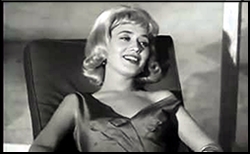
The story elements are all there. Her son having been killed in a racing car accident, a wealthy woman wants to obtain custody rights to her grandson, now being raised by his now single mother (Marcia Henderson), a former stripper. To that end, he hires a struggling young attorney (Craig Hill) to go to Acapulco to offer the woman $500,000 to give up the child.
When he gets there, she refuses outright, but her twin sister and her husband (Robert Lowery) have other ideas, one of which is murder, and of course you already know, I’m sure, how it is that they think they can pull it off.
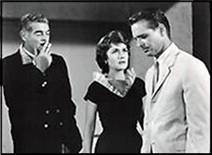
The plot is intricately structured and well planned out, but the ending is telegraphed well in advance, leading to a twist ending which is no surprise at all. There’s no fun in that! It is fun to see Marcia Henderson (whom I remember from her leading role in the long-forgotten TV series Dear Phoebe) play two roles, one a dark-haired and very prim and proper mother, the other a brassy blonde floozy whose dancing career is going nowhere, now that his sister has quit the act they had together.
It is also fun to see how Robert Lowery, a long-time B-movie star in the 1940s, looked in the later stages of his career. With a mustache and generally older looks, he looks even more like Clark Gable or Cesar Romero than ever (on the left in the lowermost photo).
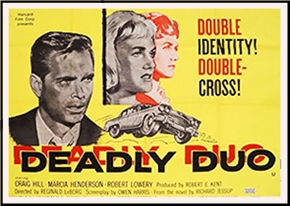
Sat 16 May 2020

REX STOUT “Immune to Murder.†Novelette. Nero Wolfe. First published in The American Magazine, November 1955. Reprinted in Ellery Queen’s Mystery Magazine, February 1957, and Ellery Queen’s Anthology #12 (Davis Publications, 1967). Collected in Three for the Chair (Viking, hardcover, 1957).
I think that Nero Wolfe left his Manhattan brownstone on business more often than Rex Stout wanted us to believe, and when it happened, a big deal was made of it. Strangely enough, though, when Archie and Wolfe make a trip in “Immune to Murder†of over 300 miles by automobile to a fishing camp somewhere up in the Adirondacks, the latter shows only a minor annoyance rather than his usual petulance at being away from home.
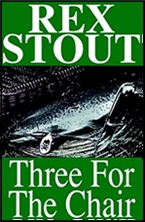
That may be because he’s doing it out of some loyalty to his country, as what he’s been asked to do is cook some fish for lunch at a meeting of ambassadors and various high level financiers. Which he does, but it wouldn’t be a Nero Wolfe story if one of the high level financiers isn’t found dead in the water, having been hit over the head with a heavy stick of firewood.
Brought in on the case are an Attorney General, a district attorney, a sheriff and three state troopers, all of whom badger Wolfe no end, thinking (improbably) that he, as the only “outsider,†had something to do with it. In his defense, Wolfe consults his own lawyer, some law books, and places a telephone call to the Secretary of State in Washington to make sure he’s on safe ground before identifying the killer.
The story is fine, but I don’t think it was as much fun to read as those that take place in Wolfe’s own bailiwick. Archie, on the other hand, is Archie, no matter where Wolfe’s cases take them.